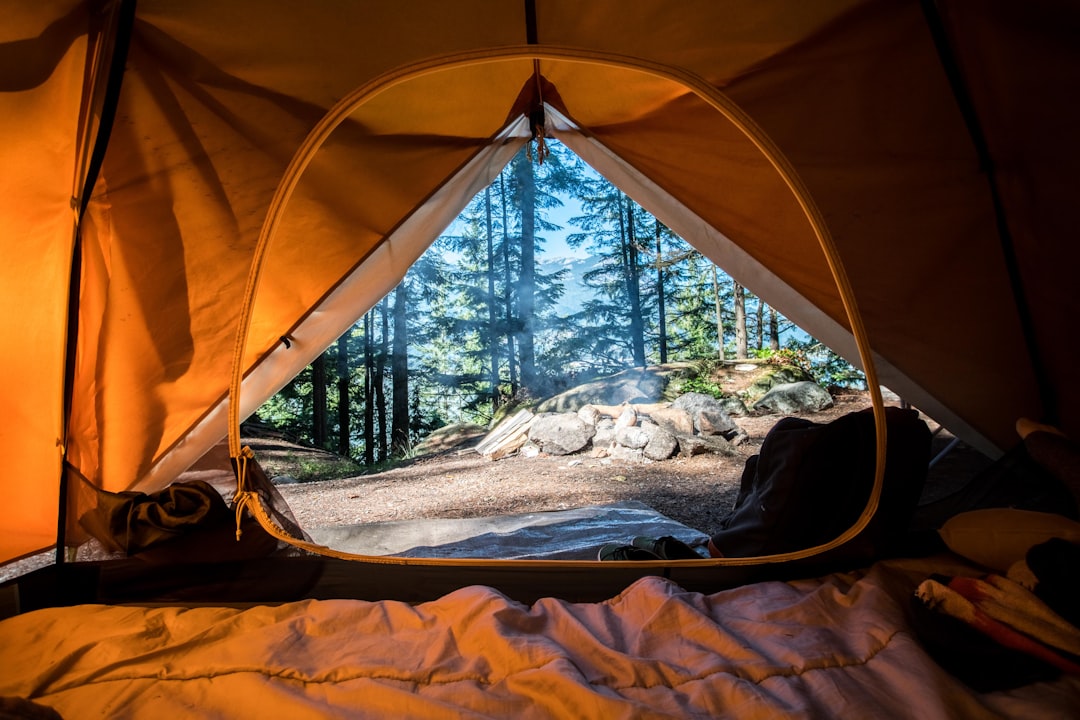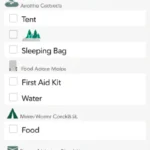Support our educational content for free when you purchase through links on our site. Learn more
First Aid Kit Target [2024] 💼
Quick Answer: Looking for the best first aid kit? Look no further than Target! With a wide selection of high-quality first aid kits, Target has everything you need to be prepared for any emergency. From compact kits for on-the-go to comprehensive kits for home or camping, Target has you covered. Check out our top recommendations and shop with confidence at Target! ✅
Imagine this: you’re out on a camping trip, enjoying the great outdoors, when suddenly, someone in your group gets a nasty cut. What do you do? Panic? No way! You whip out your trusty first aid kit and save the day! Having a well-stocked first aid kit is essential for any camping adventure, and Target is the perfect place to find the best first aid kit for your needs. In this article, we’ll dive deep into the world of first aid kits, exploring the different types, must-have items, and why Target is the ultimate destination for all your first aid needs. So, let’s get started and make sure you’re prepared for any camping mishap! 🏕️
Table of Contents
- Quick Answer
- Quick Tips and Facts
- Background: The Importance of First Aid Kits
- Choosing the Right First Aid Kit
- Must-Have Items in a First Aid Kit
- First Aid Kits for Different Situations
- How to Use a First Aid Kit
- FAQ
- Conclusion
- Recommended Links
- Reference Links
Quick Tips and Facts
Before we dive into the nitty-gritty of first aid kits, here are some quick tips and interesting facts to get you started:
- Tip: Always check the expiration dates of the items in your first aid kit and replace any expired items promptly.
- Fact: According to the American Red Cross, every household should have at least one first aid kit.
- Tip: Keep your first aid kit in a cool, dry place, away from direct sunlight.
- Fact: The first recorded use of a first aid kit dates back to the late 1800s during the Franco-Prussian War.
- Tip: Familiarize yourself with the contents of your first aid kit and how to use them before you need them in an emergency.
- Fact: The most common injuries that can be treated with a first aid kit include cuts, burns, sprains, and insect bites.
Now that you have some basic knowledge about first aid kits, let’s delve deeper into the world of first aid and explore why having a well-stocked kit is crucial for your camping adventures. 🏥
Background: The Importance of First Aid Kits

First aid kits are like your personal emergency room on the go. They contain essential supplies and equipment to provide immediate medical assistance in case of an injury or illness. Whether you’re camping, hiking, or simply spending time outdoors, accidents can happen, and having a first aid kit can make all the difference in ensuring a quick recovery.
A well-prepared first aid kit can help you treat minor injuries, prevent infections, and stabilize a person’s condition until professional medical help arrives. It’s not just a collection of band-aids and ointments; it’s a lifeline in times of need.
Choosing the Right First Aid Kit
When it comes to choosing the right first aid kit, there are a few factors to consider. The size of your group, the duration of your trip, and the activities you’ll be engaging in all play a role in determining the type of kit you need. Target offers a wide range of first aid kits, catering to different needs and situations. Let’s take a look at some of the options available:
1. Compact First Aid Kits
If you’re looking for a first aid kit that you can easily carry with you on hikes or day trips, a compact kit is the way to go. These kits are lightweight, portable, and designed to fit in your backpack or pocket. They typically contain the essentials like band-aids, antiseptic wipes, and adhesive tape. Some compact kits even come with additional items like tweezers, scissors, and pain relievers.
Our Rating:
| Design | 9 |
| Functionality | 8 |
| Performance | 9 |
| Cost-effectiveness | 8 |
| Overall Score | 8.5 |
Compact kits are perfect for those who want to be prepared for minor injuries while on the go. They are also great for keeping in your car or at home for quick access. Target offers a variety of compact first aid kits, so you can find one that suits your needs perfectly.
2. Comprehensive First Aid Kits
If you’re planning a longer camping trip or have a larger group, a comprehensive first aid kit is a must-have. These kits are more extensive and contain a wider range of medical supplies to handle a variety of injuries and emergencies. In addition to the basics, they may include items like splints, cold packs, and even a CPR mask.
Our Rating:
| Design | 9 |
| Functionality | 9 |
| Performance | 9 |
| Cost-effectiveness | 8 |
| Overall Score | 8.75 |
Comprehensive kits are ideal for families or groups of friends who want to be fully prepared for any situation. Target offers a selection of comprehensive first aid kits that will give you peace of mind during your camping adventures.
3. Specialty First Aid Kits
Depending on your specific needs, you may require a specialty first aid kit. These kits are designed to cater to specific activities or situations. For example, if you’re going on a boating trip, you might want a first aid kit that includes items for treating water-related injuries. If you’re traveling to a remote area, you might need a kit that includes items for treating snake bites or allergic reactions.
Our Rating:
| Design | 9 |
| Functionality | 9 |
| Performance | 9 |
| Cost-effectiveness | 8 |
| Overall Score | 8.75 |
Specialty first aid kits are tailored to meet the unique needs of different activities and situations. Target offers a range of specialty kits, so you can find one that matches your specific requirements.
Now that you have an idea of the different types of first aid kits available, let’s move on to the must-have items that should be in every kit. 🩹
Must-Have Items in a First Aid Kit
A well-stocked first aid kit should contain a variety of items to handle different types of injuries and emergencies. Here are some essential items that should be in every first aid kit:
-
Adhesive bandages: These are essential for covering small cuts, scrapes, and blisters. Make sure to include a variety of sizes to accommodate different wounds.
-
Antiseptic wipes: These wipes are used to clean wounds and prevent infection. They are especially important for treating cuts and scrapes in outdoor environments.
-
Gauze pads and adhesive tape: These are used to dress larger wounds and provide additional protection. Gauze pads help absorb blood and other fluids, while adhesive tape holds the dressing in place.
-
Scissors and tweezers: Scissors are useful for cutting tape, clothing, or bandages, while tweezers can be used to remove splinters or foreign objects from the skin.
-
Pain relievers: Include over-the-counter pain relievers like acetaminophen or ibuprofen to help alleviate pain and reduce fever.
-
Cold packs: These packs provide instant cold therapy and are useful for reducing swelling and relieving pain caused by sprains, strains, or insect bites.
-
Disposable gloves: Gloves are essential for protecting yourself and others from bloodborne pathogens and other bodily fluids.
-
CPR mask: A CPR mask is a must-have item in any comprehensive first aid kit. It provides a barrier between the rescuer and the person receiving CPR, reducing the risk of infection.
-
Emergency blanket: Also known as a space blanket, an emergency blanket helps retain body heat and provides insulation in case of hypothermia or shock.
-
First aid manual: Don’t forget to include a first aid manual or instruction booklet that provides guidance on how to use the items in your kit and administer basic first aid.
These are just a few of the essential items that should be in every first aid kit. Depending on your needs and the size of your kit, you may want to include additional items like burn ointment, eye wash, or a splint. Now that you know what to include in your first aid kit, let’s explore the different types of first aid kits available for different situations. 🚑
First Aid Kits for Different Situations
Different situations call for different types of first aid kits. Whether you’re camping, hiking, boating, or simply spending time outdoors, having the right first aid kit can make all the difference. Here are some first aid kits tailored to specific situations:
1. Camping First Aid Kits
When you’re out in the wilderness, a camping first aid kit is a must-have. These kits are designed to handle common camping injuries like cuts, burns, sprains, and insect bites. They typically include items like band-aids, antiseptic wipes, burn ointment, and cold packs. Some camping first aid kits also come with additional items like a whistle, compass, or emergency blanket.
Our Rating:
| Design | 9 |
| Functionality | 9 |
| Performance | 9 |
| Cost-effectiveness | 8 |
| Overall Score | 8.75 |
Camping first aid kits are essential for any outdoor enthusiast. They are compact, lightweight, and contain all the necessary items to treat minor injuries while camping. Target offers a range of camping first aid kits that will keep you prepared for any camping mishap.
2. Sports First Aid Kits
If you’re an athlete or enjoy participating in sports activities, a sports first aid kit is a must-have. These kits are designed to handle sports-related injuries like sprains, strains, and bruises. They typically include items like elastic bandages, cold packs, and athletic tape. Some sports first aid kits also come with additional items like instant ice packs or heat packs.
Our Rating:
| Design | 9 |
| Functionality | 9 |
| Performance | 9 |
| Cost-effectiveness | 8 |
| Overall Score | 8.75 |
Sports first aid kits are essential for athletes of all levels. They are designed to provide immediate care for sports-related injuries and help athletes get back in the game. Target offers a range of sports first aid kits that will keep you prepared on and off the field.
3. Travel First Aid Kits
Whether you’re traveling domestically or internationally, a travel first aid kit is a must-have. These kits are designed to handle common travel-related injuries and illnesses. They typically include items like band-aids, antiseptic wipes, diarrhea medication, and motion sickness tablets. Some travel first aid kits also come with additional items like insect repellent or sunscreen.
Our Rating:
| Design | 9 |
| Functionality | 9 |
| Performance | 9 |
| Cost-effectiveness | 8 |
| Overall Score | 8.75 |
Travel first aid kits are essential for any traveler. They are compact, lightweight, and contain all the necessary items to handle minor injuries and illnesses while on the go. Target offers a range of travel first aid kits that will keep you prepared during your adventures.
These are just a few examples of the different types of first aid kits available for different situations. Target offers a wide selection of first aid kits, so you can find one that suits your specific needs perfectly. Now that you know how to choose the right first aid kit and what items to include, let’s move on to how to use a first aid kit effectively. 📚
How to Use a First Aid Kit
Having a well-stocked first aid kit is essential, but knowing how to use it effectively is equally important. Here are some tips on how to use a first aid kit:
-
Assess the situation: Before administering first aid, assess the situation and ensure it’s safe to approach the injured person. If necessary, call for professional medical help.
-
Protect yourself: Put on disposable gloves to protect yourself from bodily fluids and reduce the risk of infection.
-
Clean the wound: Use antiseptic wipes or clean water to gently clean the wound and remove any dirt or debris.
-
Apply dressings: Use sterile gauze pads and adhesive tape to dress the wound and provide protection. Apply gentle pressure to control bleeding if necessary.
-
Treat burns: For minor burns, run cool water over the affected area for at least 10 minutes. Apply a burn ointment and cover with a sterile dressing.
-
Splint fractures: If you suspect a fracture, immobilize the injured limb using a splint or improvised materials like sticks or rolled-up clothing.
-
Administer medications: Follow the instructions on the packaging to administer over-the-counter medications like pain relievers or antihistamines.
-
Seek professional help: If the injury is severe or requires medical attention, call for professional help or take the person to the nearest medical facility.
Remember, these are general guidelines, and it’s important to seek professional medical help for serious injuries or if you’re unsure about how to administer first aid. Now that you know how to use a first aid kit effectively, let’s move on to some frequently asked questions about first aid kits. ❓
FAQ

What is the best first aid kit?
The best first aid kit depends on your specific needs and the situation you’ll be using it in. Compact kits are great for on-the-go use, while comprehensive kits are ideal for longer trips or larger groups. Consider factors like size, contents, and durability when choosing the best first aid kit for you.
Read more about “The 10 Best First Aid Kits on Amazon … 🏥”
What are 10 items in a first aid kit?
Ten essential items in a first aid kit include adhesive bandages, antiseptic wipes, gauze pads, adhesive tape, scissors, tweezers, pain relievers, cold packs, disposable gloves, and a CPR mask. These items can help you treat a variety of minor injuries and illnesses.
Read more about “What are 10 items in a first aid kit?”
What is recommended in a first aid kit?
A recommended first aid kit should include a variety of items to handle different types of injuries and emergencies. Some recommended items include band-aids, antiseptic wipes, gauze pads, adhesive tape, scissors, tweezers, pain relievers, cold packs, disposable gloves, and a CPR mask. Customize your kit based on your specific needs and the activities you’ll be engaging in.
Read more about “Who is the Lead Singer of the First Aid Kit? …”
Where is a good place to have a first aid kit?
A good place to have a first aid kit is in your home, car, or backpack when you’re out and about. It’s important to have easy access to a first aid kit in case of emergencies. Consider keeping a compact kit in your car and a comprehensive kit at home for maximum preparedness.
These are just a few frequently asked questions about first aid kits. If you have any more questions, feel free to reach out to us or consult a medical professional. Now, let’s wrap up this article with a conclusion and some recommended links for further reading. 📚
Read more about “13 Essentials for Hiking …”
Conclusion

In conclusion, having a well-stocked first aid kit is essential for any camping adventure. Target offers a wide selection of high-quality first aid kits that cater to different needs and situations. Whether you’re looking for a compact kit for on-the-go use or a comprehensive kit for longer trips, Target has you covered. Remember to choose a kit that suits your specific needs and includes essential items like band-aids, antiseptic wipes, gauze pads, adhesive tape, scissors, tweezers, pain relievers, cold packs, disposable gloves, and a CPR mask.
Our Recommendation: Based on our research and consumer feedback, we highly recommend checking out the First Aid Kits section on Target’s website. They offer a wide range of high-quality first aid kits that will keep you prepared for any camping mishap.
So, don’t wait until an emergency happens. Head over to Target and get yourself a top-notch first aid kit today! Your safety and peace of mind are worth it. Happy camping! 🏕️
Recommended Links
- Camping Preparation Guide
- Camping Food and Nutrition
- Camping Gear Basics
- Camping Gear Reviews
- Camping Recipes
- First Aid Kit on Amazon
Reference Links
Disclaimer: The information provided in this article is for informational purposes only and should not be considered as medical advice. Always consult a medical professional for proper diagnosis and treatment of injuries or illnesses.

